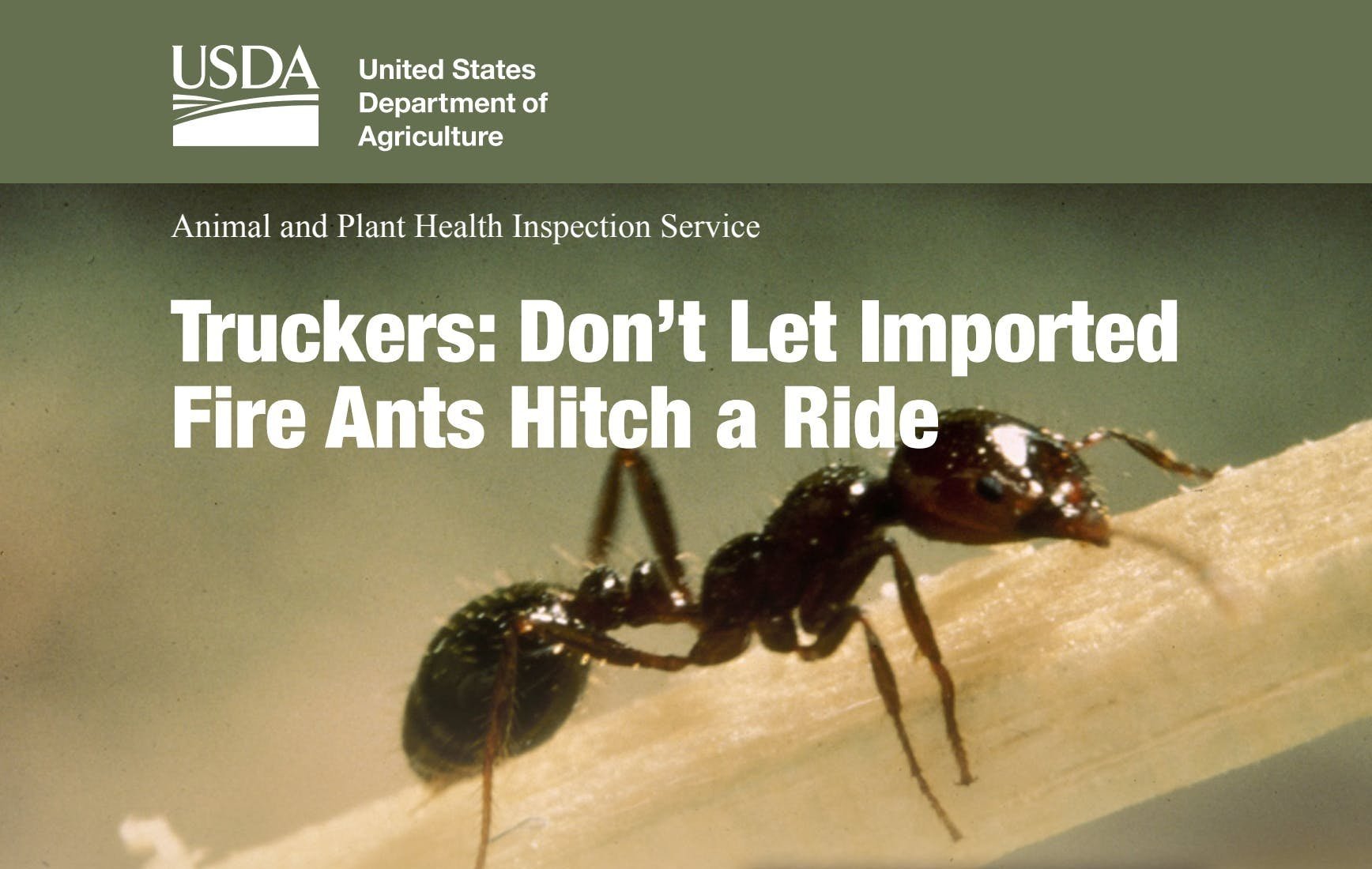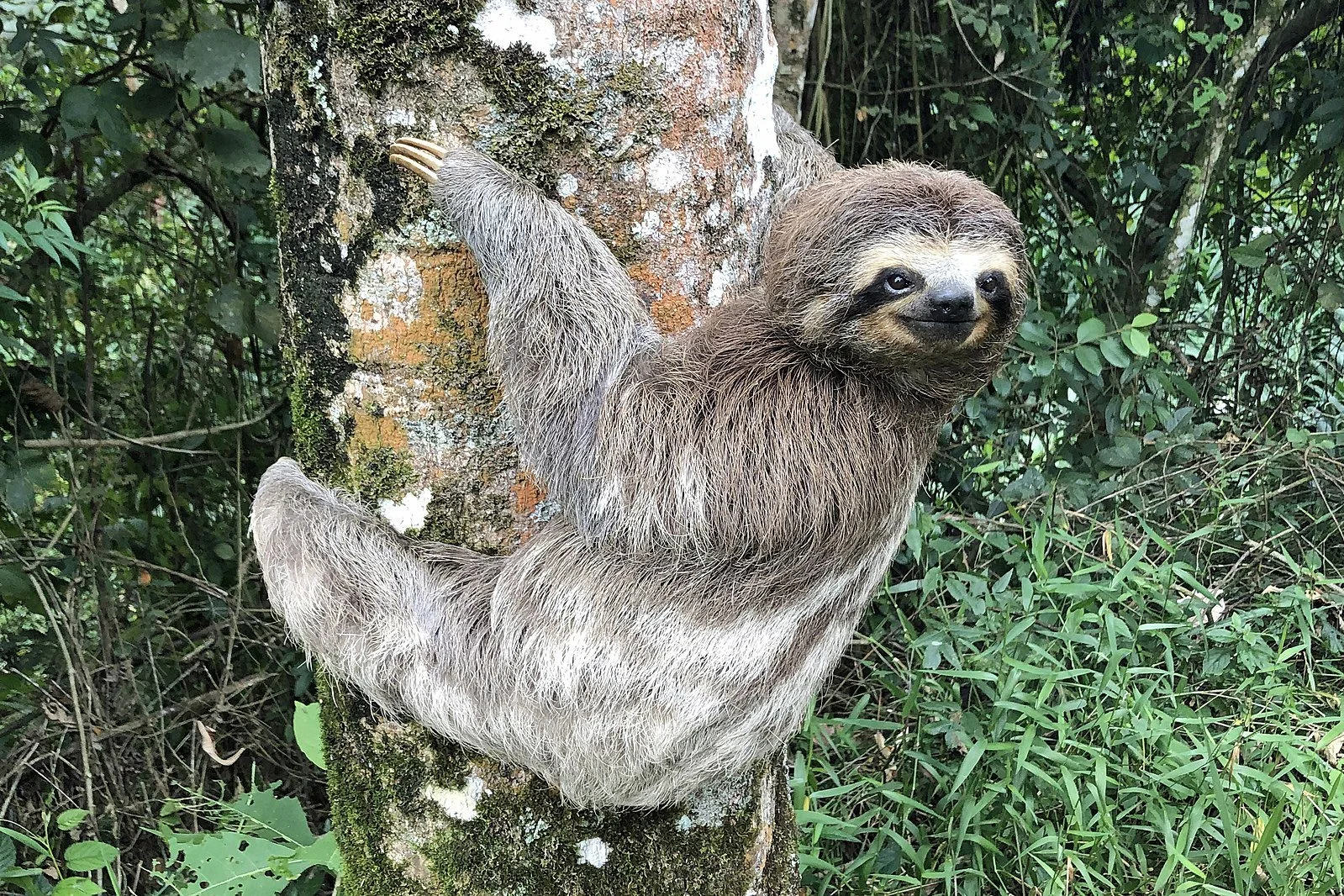What happens to an insect that hitches a ride far from their home?
The short answer
When an insect hitches a ride, its fate could vary widely based on species and distance traveled. Some might try to integrate into a new colony, others may continue living solo, a few could attempt to return home, and unfortunately, some may not survive the journey.
The long answer
You've probably had this experience: You're driving along and then you suddenly realize that there is an insect catching a ride with you.
What would happen to that little hitchhiker? Would they be confused? Would they die? Would they establish domination in their new land? Turns out, it depends.
What would happen to the insect?
Depending on how far you drove and what kind of insect caught a ride with you, there are a few things that might happen.
Possibility #1: They would try to join another colony.
Social bugs, like honeybees, ants, and termites, need to be with a group to survive. So after being dropped off in a new land, they may search for a new colony and ask for an invite.
For example, honeybees may attempt to join another hive if they can't find their way home in a process called "honeybee drift" (not to be confused with Tokyo Drift). Honeybee hives have distinct chemical signatures, called pheromones, that allow them to be easily identified by their tribe or identified as a foreigner by another tribe's guard bees.
Guard bees sussing out a visitor. Image credit: Cassie Vernier (CC BY 4.0)
A lost honeybee may approach a new tribe and, depending on how close their chemical signature is to the new tribes, they may or may not be accepted. If accepted, they'll carry out their duties in the new tribe, but if they are rejected, they'll likely die or be killed.
Possibility #2: They would try to live alone where you dropped them off.
Insects that don't need a group to survive, like spiders, flies, and butterflies, would simply just carry on living in their new stomping/buzzing grounds.
For example, about 90% of bees are known as "solitary bees" because they don't live in stereotypical hives. These loners go about the business of surviving all by themselves or in very small communes with other solitary bees. So they would probably just pick up where they left off.
"0 Belle-dame (Vanessa cardui) - Echinacea purpurea - Havré (3)" by Jean-Pol GRANDMONT is licensed under CC BY 3.0 DEED.
Other insects already travel great distances in their migrations, so you may have just given them a lift to continue their journey. Perhaps most impressive, the painted ladies flap their wings all the way from the the Sahara Desert over the Mediterranean Sea, passing through Europe to go as far north as the Arctic Circle, an trek of over 9,000 miles / 14,500 km.
Possibility #3: They would try to find their way home.
Depending on how far you drove with your insect passenger, some might try to find their way home to return to familiar lands and/or their colony.
Not to go on and on about bees, but bees have remarkable navigation skills. They use the Sun as a fixed point of reference and have been known to find their way back to their hive from as far as 8 miles / 12 km.
Possibility #4: They would die.
A very real possibility of taking an insect far from its home is that they would die. Dropped off in a new environment, they may lack the food or attract the attention of predators to result in their untimely death.
The saddest ant photo I could find. "Ant" by Sancho McCann is licensed under CC BY 2.0 DEED
For example, ants are a social animal and they use scent to find their way back to the mound. Without a scent trail, they'd likely perish without the camaraderie of their ant brethren. One study found that ants die after just six and a half days of isolation, not for lack of food, but because they literally can't digest food without other ants.
What would happen to the environment?
If you transport an insect a relatively short distance, the environment is probably not going to be greatly affected. But if you transport an insect several hundred or thousands miles/km, it could have significant impact to the environment.
Possibility #1: The environment would be unaffected.
If you drop off a single insect that is already similar to the fauna of the new environment, probably nothing of significance would happen (although the hitchhiker may beg to differ).
Possibility #2: The environment would get invaded by the new insect.
Hitchhiking insects can cause serious problems to their new environments by becoming invasive species.
An invasive species is a non-native species that can outcompete for resources because of their ability to rapidly reproduce in the absence of natural predators. the insect that hops a ride with you might end up causing a lot of issues.
Here's three of the "most wanted" invasive insect species in the United States that have hopped rides to new lands:
Fire ants
Fire ants made their way to the United States by cargo ships traveling from South America in the early 1900s. Over the years, they have caused a ton of damage to corn, soybean, and citrus crops, as well as delivering their signature fiery bites to humans and animals.
To this day, they are galavanting travelers and have been known to travel by hitching rides on long haul trucks. Their ability to spread is so problematic that the U.S. Department of Agriculture (USDA) has published a handy brochure to educate truckers on how to check for hitchhiking fire ants before inadvertently giving the ants a lift.
Stink bugs
This GIF shows how quickly the stink bug was able to spread in the United States from 2000-2019.
"Brown Marmorated Stink Bug (Halyomorpha halys) US Distribution" by Jofre Espigule Pons is licensed under CC BY-SA 4.0 DEED.
Stink bugs arrived in the United States in the 1990s, but they weren't detected for the first decade or so. By 2010, their numbers had reached outbreak proportions and inflicted severe damage on U.S. tree fruit crops to the tune of $37 million.
Mediterranean fruit flies
The most wanted fly of them all. "Fly October 2008-4" by Alvesgaspar is licensed under CC BY-SA 3.0 DEED.
Considered to be "the most important agricultural pest in the world" according to the USDA, these little flies have gone on many voyages by sea. Native to sub-Saharan Africa, they eventually made their way to Hawaii in 1910. By 1929, they landed in Florida. Their diet is prolific and have been known to infest hundreds of types of plants, including coffee, grapes, kiwi, olives, pears, and walnuts.
Possibility #3: The environment would be benefited by the new insect.
In rare cases, the introduction of a non-native or migratory species may help with controlling pests in the area.
"Hoverfly December 2007-8" by Joaquim Alves Gaspar is licensed under CC BY-SA 3.0 DEED.
For example, hoverflies (which look shockingly like bees) travel all around Europe and gobble up aphids that kill crops. If you gave this one a lift to a new area, local farmers would likely be pleased.
❤️ If you made it this far, you deserve the most wholesome story I found on Reddit about hitchhiking insects.
Curious about how the world works?
Today You Should Know is a free, weekly email newsletter designed to help you learn something new every Friday.
Subscribe today 👇
Check out some other curious questions:
Sources
Boronow, K. (2011, December 21). Alien invasion! Ecological and societal impacts of invasive species. Science in the News. https://sitn.hms.harvard.edu/flash/2011/invasive_species/
Daugherty, M. (2022, September 28). Brown Marmorated Stink Bug. Center for Invasive Species Research. https://cisr.ucr.edu/invasive-species/brown-marmorated-stink-bug
Government of British Columbia. (n.d.). Apiculture Factsheet. British Columbia Ministry of Agriculture, Food, and Fisheries. https://www2.gov.bc.ca/assets/gov/farming-natural-resources-and-industry/agriculture-and-seafood/animal-and-crops/animal-production/bee-assets/api_fs111.pdf
Marinelli, J. (2018, August 1). Winging It. National Wildlife Federation. https://www.nwf.org/Magazines/National-Wildlife/2018/Aug-Sept/Animals/Insect-Migration
Morrison, R. (2018, June 21). Invasive Insects: The Top 4 “Most Wanted” List. Entomology Today. https://entomologytoday.org/2018/06/21/invasive-insects-the-top-4-most-wanted-list/
Shelomi, M. (2017, December 7). What Happens to an Ant That Gets Lost?. HuffPost. https://www.huffpost.com/entry/what-happens-to-an-ant-th_b_2725947
Shultz, D. (2015, February 3). Lonely ants die of malnutrition. Science. https://www.science.org/content/article/lonely-ants-die-malnutrition
Staughton, J. (2023, October 19). What Happens To Bees When They Get Lost?. Science ABC. https://www.scienceabc.com/nature/animals/what-happens-to-bees-when-they-get-lost.html
USDA. (n.d.). Mediterranean Fruit Fly. USDA Animal and Plant Health Inspection Service. https://www.aphis.usda.gov/aphis/resources/pests-diseases/hungry-pests
Weinberger, D. (2024, January 22). 7 Invasive Insects and What To Do About Them. Family Handyman. https://www.familyhandyman.com/list/what-to-do-about-invasive-insects/
Witze, A. (2018, April 5). Flying insects tell tales of long-distance migrations. Science News. https://www.sciencenews.org/article/flying-insects-tell-tales-long-distance-migrations











It’s like an American accent but with calendars.